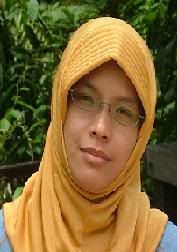Live from Training 2006: Creativity and Strategic Thinking Enhanced
Live from Training 2006: Creativity and Strategic Thinking Enhanced
If the words "heterogeneous workforce" conjures images of staffers doomed to constantly butt heads rather than meet deadlines, Ann Herrmann-Nehdi, who led a Monday session at the Training 2006 Conference and Expo, wants to enlighten you. According to Hermann-Nehdi, CEO of Lake Lure, N.C.,-based learning research and development consultancy Herrmann International, diverse teams are not just the doable, accepted practice, but actually the way to go.
"Heterogeneous groups are capable of significantly greater creative output than unbalanced or homogeneous groups," Herrmann-Nehdi emphasized, citing four major creative approaches that she said you should be able to recognize among your workers. Those driven by purpose look at work from a "factual, rigorous, research, analytical, financial" perspective; possibility-driven employees are "holistic, playful, intuitive, visionary, experimental;" those attracted to process are "disciplined and organized and primarily interested in capturing, verifying and planning;" while workers who are mainly drawn to the "people" aspect of any project tend to like the "interpersonal, aesthetic, spiritual, sensual and tactile."
If your group of seemingly disparate workers isn't functioning well, it's probably due much more to the problem-solving strategy you're employing than to their differences, if Hermann-Nehdi is to be believed. The researcher has developed tools, or project management approaches, that might put an apparently insurmountable task into proper perspective. "Sometimes our subconscious knows more than we do," she pointed out. Getting in touch with that hidden realm of handy solutions, she explained, can begin by asking yourself questions such as, "What does the 'the problem' look like" and "What does 'the problem' feel like?" After that, she advised writing down any thoughts you have and drawing a picture of 'the problem' in its current state and then another of it solved. When this process is complete, she said to share it by describing it to another person.
Similarly, ideas that seem "crazy" shouldn't be discounted and forgotten. While impossible to implement in their current state, many of these ideas have potential for use in the brainstorming process, Hermann-Nehdi said. Your team, she suggested, might sometimes have luck using an exercise she calls "Magic Wand Thinking."
"Ask, 'What if I had a magic wand and were able to solve this problem with no constraints on what the solution might look like or how off the wall it might be, what would the solution look like?' " To do this, ask yourself what's tempting about the idea, what it's lacking and what you need to change about it to make it work.
For more information, visit www.hbdi.com.


0 Comments:
Enregistrer un commentaire
<< Home